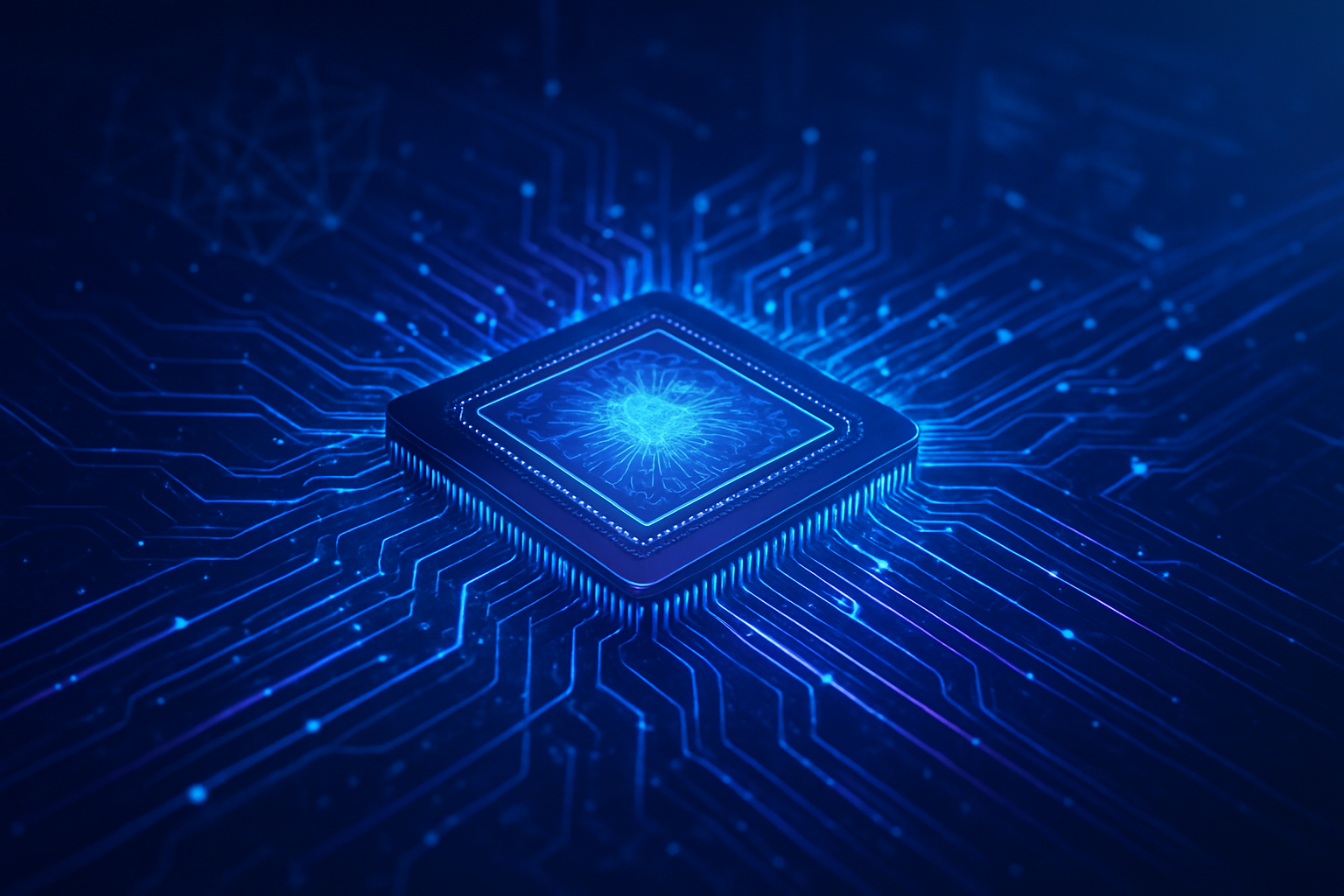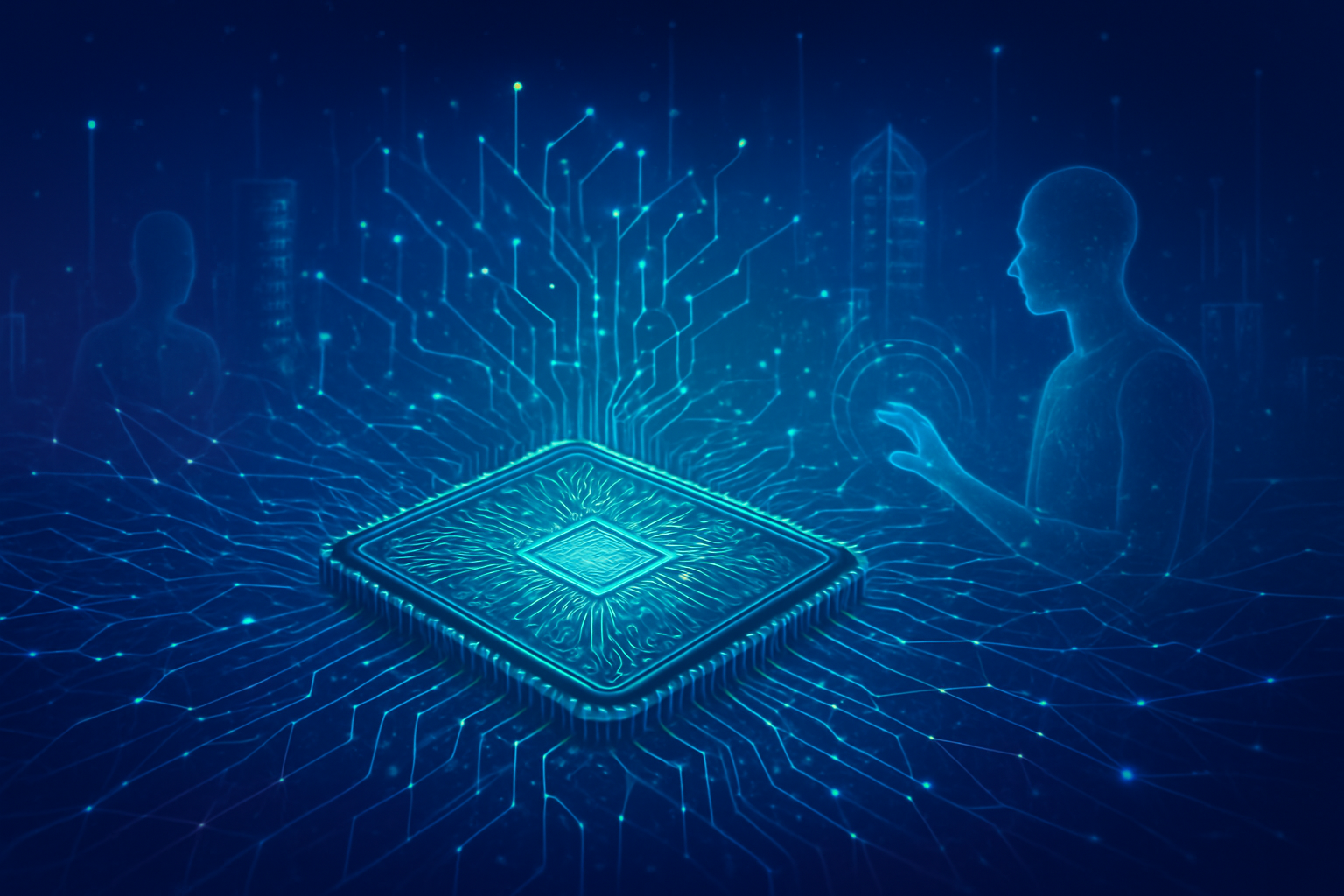San Francisco, CA – November 19, 2025 – Artificial intelligence is rapidly advancing beyond its traditional enterprise applications, now deeply embedding itself in the most intimate corners of human life: social and personal relationships. The burgeoning integration of AI into dating applications, exemplified by platforms like Ailo, is fundamentally reshaping the quest for love, moving beyond superficial swiping to promise more profound and compatible connections. This evolution signifies a pivotal moment in AI's societal impact, offering both the allure of optimized romance and a complex web of ethical considerations that challenge our understanding of authentic human connection.
The immediate significance of this AI influx is multi-faceted. It's already transforming how users interact with dating platforms by offering more efficient and personalized matchmaking, directly addressing the pervasive "dating app burnout" experienced by millions. Apps like Ailo, with their emphasis on deep compatibility assessments, exemplify this shift away from endless, often frustrating, swiping towards deeply analyzed connections. Furthermore, AI's role in enhancing safety and security by detecting fraud and fake profiles is immediately crucial in building trust within the online dating environment. However, this rapid integration also brings immediate challenges related to privacy, data security, and the perceived authenticity of interactions. The ongoing societal conversation about whether AI can genuinely foster "love" highlights a critical dialogue about the role of technology in deeply human experiences, pushing the boundaries of romance in an increasingly algorithmic world.
The Algorithmic Heart: Deconstructing AI's Matchmaking Prowess
The technical advancements driving AI in dating apps represent a significant leap from the rudimentary algorithms of yesteryear. Ailo, a Miami-based dating app, stands out with its comprehensive AI-powered approach to matchmaking, built on "Authentic Intelligence Love Optimization." Its core capabilities include an extensive "Discovery Assessment," rooted in two decades of relationship research, designed to identify natural traits and their alignment for healthy relationships. The AI then conducts a multi-dimensional compatibility analysis across six key areas: Magnetism, Connection, Comfort, Perspective, Objectives, and Timing, also considering shared thoughts, experiences, and lifestyle preferences. Uniquely, Ailo's AI generates detailed and descriptive user profiles based on these assessment results, eliminating the need for users to manually write bios and aiming for greater authenticity. Crucially, Ailo enforces a high compatibility threshold, requiring at least 70% compatibility between users before displaying potential matches, thereby filtering out less suitable connections and directly combating dating app fatigue.
This approach significantly differs from previous and existing dating app technologies. Traditional dating apps largely depend on manual swiping and basic filters like age, location, and simple stated preferences, often leading to a "shopping list" mentality and user burnout. AI-powered apps, conversely, utilize machine learning and natural language processing (NLP) to continuously analyze multiple layers of information, including demographic data, lifestyle preferences, communication styles, response times, and behavioral patterns. This creates a more multi-dimensional understanding of each individual. For instance, Hinge's (owned by Match Group [NASDAQ: MTCH]) "Most Compatible" feature uses AI to rank daily matches, while apps like Hily use NLP to analyze bios and suggest improvements. AI also enhances security by analyzing user activity patterns and verifying photo authenticity, preventing catfishing and romance scams. The continuous learning aspect of AI algorithms, refining their matchmaking abilities over time, further distinguishes them from static, rule-based systems.
Initial reactions from the AI research community and industry experts are a mix of optimism and caution. Many believe AI can revolutionize dating by providing more efficient and personalized matching, leading to better outcomes. However, critics, such as Anastasiia Babash, a PhD candidate at the University of Tartu, warn about the potential for increased reliance on AI to be detrimental to human social skills. A major concern is that AI systems, trained on existing data, can inadvertently carry and reinforce societal biases, potentially leading to discriminatory outcomes based on race, gender, or socioeconomic status. While current AI has limited emotional intelligence and cannot truly understand love, major players like Match Group [NASDAQ: MTCH] are significantly increasing their investment in AI, signaling a strong belief in its transformative potential for the dating industry.
Corporate Courtship: AI's Impact on the Tech Landscape
The integration of AI into dating is creating a dynamic competitive landscape, benefiting established giants, fostering innovative startups, and disrupting existing products. The global online dating market, valued at over $10 billion in 2024, is projected to nearly double by 2033, largely fueled by AI advancements.
Established dating app giants like Match Group [NASDAQ: MTCH] (owner of Tinder, Hinge, Match.com, OkCupid) and Bumble [NASDAQ: BMBL] are aggressively integrating AI. Match Group has declared an "AI transformation" phase, planning new AI products by March 2025, including AI assistants for profile creation, photo selection, optimized matching, and suggested messages. Bumble is introducing AI features like photo suggestions and the concept of "AI dating concierges." These companies benefit from vast user bases and market share, allowing them to implement AI at scale and refine offerings with extensive user data.
A new wave of AI dating startups is also emerging, leveraging AI for specialized or deeply analytical experiences. Platforms like Ailo differentiate themselves with science-based compatibility assessments, aiming for meaningful connections. Other startups like Iris Dating use AI to analyze facial features for attraction, while Rizz and YourMove.ai provide AI-generated suggestions for messages and profile optimization. These startups carve out niches by focusing on deep compatibility, specialized user bases, and innovative AI applications, aiming to build strong community moats against larger competitors.
Major AI labs and tech companies like Google [NASDAQ: GOOGL], Meta [NASDAQ: META], Amazon [NASDAQ: AMZN], and Microsoft [NASDAQ: MSFT] benefit indirectly as crucial enablers and infrastructure providers, supplying foundational AI models, cloud services, and advanced algorithms. Their advancements in large language models (LLMs) and generative AI are critical for the sophisticated features seen in modern dating apps. There's also potential for these tech giants to acquire promising AI dating startups or integrate advanced features into existing social platforms, further blurring the lines between social media and dating.
AI's impact is profoundly disruptive. It's shifting dating from static, filter-based matchmaking to dynamic, behavior-driven algorithms that continuously learn. This promises to deliver consistently compatible matches and reduce user churn. Automated profile optimization, communication assistance, and enhanced safety features (like fraud detection and identity verification) are revolutionizing the user experience. The emergence of virtual relationships through AI chatbots and virtual partners (e.g., DreamGF, iGirl) represents a novel disruption, offering companionship that could divert users from human-to-human dating. However, this also raises an "intimate authenticity crisis," making it harder to distinguish genuine human interaction from AI-generated content.
Investment in AI for social tech, particularly dating, is experiencing a significant uptrend, with venture capital firms and tech giants pouring resources into this sector. Investors are attracted to AI-driven platforms' potential for higher user retention and lifetime value through consistently compatible matches, creating a "compounding flywheel" where more users generate more data, improving AI accuracy. The projected growth of the online dating market, largely attributed to AI, makes it an attractive sector for entrepreneurs and investors, despite ongoing debates about the "AI bubble."
Beyond the Algorithm: Wider Implications and Ethical Crossroads
The integration of AI into personal applications like dating apps represents a significant chapter in the broader AI landscape, building upon decades of advancements in social interaction. This trend aligns with the overall drive towards personalization, automation, and enhanced user experience seen across various AI applications, from generative AI for content creation to AI assistants for mental well-being.
AI's impact on human relationships is multifaceted. AI companions like Replika offer emotional support and companionship, potentially altering perceptions of intimacy by providing a non-judgmental, customizable, and predictable interaction. While some view this as a positive for emotional well-being, concerns arise that reliance on AI could exacerbate loneliness and social isolation, as individuals might opt for less challenging AI relationships over genuine human interaction. The risk of AI distorting users' expectations for real-life relationships, with AI companions programmed to meet needs without mutual effort, is also a significant concern. However, AI tools can also enhance communication by offering advice and helping users develop social skills crucial for healthy relationships.
In matchmaking, AI is moving beyond superficial criteria to analyze values, communication styles, and psychological compatibility, aiming for more meaningful connections. Virtual dating assistants are emerging, learning user preferences and even initiating conversations or scheduling dates. This represents a substantial evolution from early chatbots like ELIZA (1966), which demonstrated rudimentary natural language processing, and the philosophical groundwork laid by the Turing Test (1950) regarding machine intelligence. While early AI systems struggled, modern generative AI comes closer to human-like text and conversation, blurring the lines between human and machine interaction in intimate contexts. This also builds on the pervasive influence of social media algorithms since the 2000s, which personalize feeds and suggest connections, but takes it a step further by directly attempting to engineer romantic relationships.
However, these advancements are accompanied by significant ethical and practical concerns, primarily regarding privacy and bias. AI-powered dating apps collect immense amounts of sensitive personal data—sexual orientation, private conversations, relationship preferences—posing substantial privacy risks. Concerns about data misuse, unauthorized profiling, and potential breaches are paramount, especially given that AI systems are vulnerable to cyberattacks and data leakage. The lack of transparency regarding how data is used or when AI is modifying interactions can lead to users unknowingly consenting to extensive data harvesting. Furthermore, the extensive use of AI can lead to emotional manipulation, where users develop attachments to what they believe is another human, only to discover they were interacting with an AI.
Algorithmic bias is another critical concern. AI systems trained on datasets that reflect existing human and societal prejudices can inadvertently perpetuate stereotypes, leading to discriminatory outcomes. This bias can result in unfair exclusions or misrepresentations in matchmaking, affecting who users are paired with. Studies have shown dating apps can perpetuate racial bias in recommendations, even without explicit user preferences. This raises questions about whether intimate preferences should be subject to algorithmic control and emphasizes the need for AI models to be fair, transparent, and unbiased to prevent discrimination.
The Future of Romance: AI's Evolving Role
Looking ahead, the role of AI in dating and personal relationships is set for exponential growth and diversification, promising increasingly sophisticated interactions while also presenting formidable challenges.
In the near term (current to ~3 years), we can expect continued refinement of personalized AI matchmaking. Algorithms will delve deeper into user behavior, emotional intelligence, and lifestyle patterns to create "compatibility-first" matches based on core values and relationship goals. Virtual dating assistants will become more common, managing aspects of the dating process from screening profiles to initiating conversations and scheduling dates. AI relationship coaching tools will also see significant advancements, analyzing communication patterns, offering real-time conflict resolution tips, and providing personalized advice to improve interactions. Early virtual companions will continue to evolve, offering more nuanced emotional support and companionship.
Longer term (5-10+ years), AI is poised to fundamentally redefine human connection. By 2030, AI dating platforms may understand not just who users want, but what kind of partner they need, merging algorithms, psychology, and emotion into a seamless system. Immersive VR/AR dating experiences could become mainstream, allowing users to engage in realistic virtual dates with tactile feedback, making long-distance relationships feel more tangible. The concept of advanced AI companions and virtual partners will likely expand, with AI dynamically adapting to a user's personality and emotions, potentially leading to some individuals "marrying" their AI companions. The global sex tech market's projected growth, including AI-powered robotic partners, further underscores this potential for AI to offer both emotional and physical companionship. AI could also evolve into a comprehensive relationship hub, augmenting online therapy with data-driven insights.
Potential applications on the horizon include highly accurate predictive compatibility, AI-powered real-time relationship coaching for conflict resolution, and virtual dating assistants that fully manage the dating process. AI will also continue to enhance safety features, detecting sophisticated scams and deepfakes.
However, several critical challenges need to be addressed. Ethical concerns around privacy and consent are paramount, given the vast amounts of sensitive data AI dating apps collect. Transparency about AI usage and the risk of emotional manipulation by AI bots are significant issues. Algorithmic bias remains a persistent threat, potentially reinforcing societal prejudices and leading to discriminatory matchmaking. Safety and security risks will intensify with the rise of advanced deepfake technology, enabling sophisticated scams and sextortion. Furthermore, an over-reliance on AI for communication and dating could hinder the development of natural social skills and the ability to navigate real-life social dynamics, potentially perpetuating loneliness despite offering companionship.
Experts predict a significant increase in AI adoption for dating, with a large percentage of singles, especially Gen Z, already using AI for profiles, conversation starters, or compatibility screening. Many believe AI will become the default method for meeting people by 2030, shifting away from endless swiping towards intelligent matching. While the rise of AI companionship is notable, most experts emphasize that AI should enhance authentic human connections, not replace them. The ongoing challenge will be to balance innovation with ethical considerations, ensuring AI facilitates genuine intimacy without eroding human agency or authenticity.
The Algorithmic Embrace: A New Era for Human Connection
The integration of Artificial Intelligence into social and personal applications, particularly dating, marks a profound and irreversible shift in the landscape of human relationships. The key takeaway is that AI is moving beyond simple automation to become a sophisticated, personalized agent in our romantic lives, promising efficiency and deeper compatibility where traditional methods often fall short. Apps like Ailo exemplify this new frontier, leveraging extensive assessments and high compatibility thresholds to curate matches that aim for genuine, lasting connections, directly addressing the "dating app burnout" that plagues many users.
This development holds significant historical importance in AI's trajectory. It represents AI's transition from primarily analytical and task-oriented roles to deeply emotional and interpersonal domains, pushing the boundaries of what machines can "understand" and facilitate in human experience. While not a singular breakthrough like the invention of the internet, it signifies a pervasive application of advanced AI, particularly generative AI and machine learning, to one of humanity's most fundamental desires: connection and love. It demonstrates AI's growing capability to process complex human data and offer highly personalized interactions, setting a precedent for future AI integration in other sensitive areas of life.
In the long term, AI's impact will likely redefine the very notion of connection and intimacy. It could lead to more successful and fulfilling relationships by optimizing compatibility, but it also forces us to confront challenging questions about authenticity, privacy, and the nature of human emotion in an increasingly digital world. The blurring lines between human-human and human-AI relationships, with the rise of virtual companions, will necessitate ongoing ethical debates and societal adjustments.
In the coming weeks and months, observers should closely watch for increased regulatory scrutiny on data privacy and the ethical implications of AI in dating. The debate around the authenticity of AI-generated profiles and conversations will intensify, potentially leading to calls for clearer disclosure mechanisms within apps. Keep an eye on the advancements in generative AI, which will continue to create more convincing and potentially deceptive interactions, alongside the growth of dedicated AI companionship platforms. Finally, observe how niche AI dating apps like Ailo fare in the market, as their success or failure will indicate broader shifts in user preferences towards more intentional, compatibility-focused approaches to finding love. The algorithmic embrace of romance is just beginning, and its full story is yet to unfold.
This content is intended for informational purposes only and represents analysis of current AI developments.
TokenRing AI delivers enterprise-grade solutions for multi-agent AI workflow orchestration, AI-powered development tools, and seamless remote collaboration platforms.
For more information, visit https://www.tokenring.ai/.









